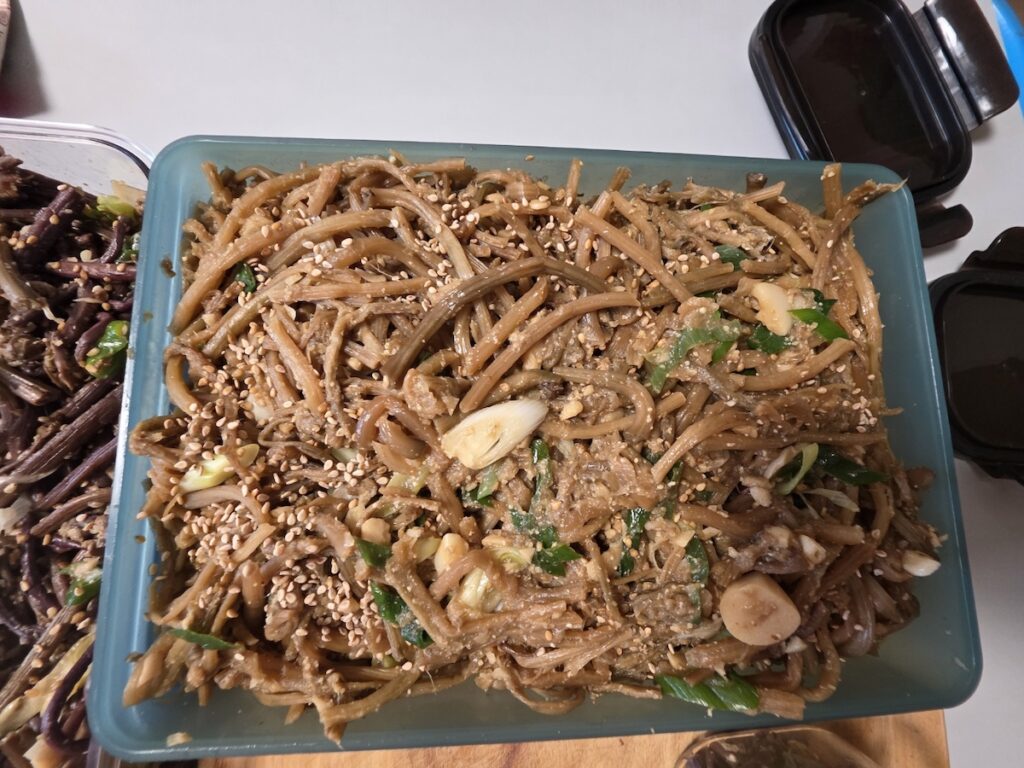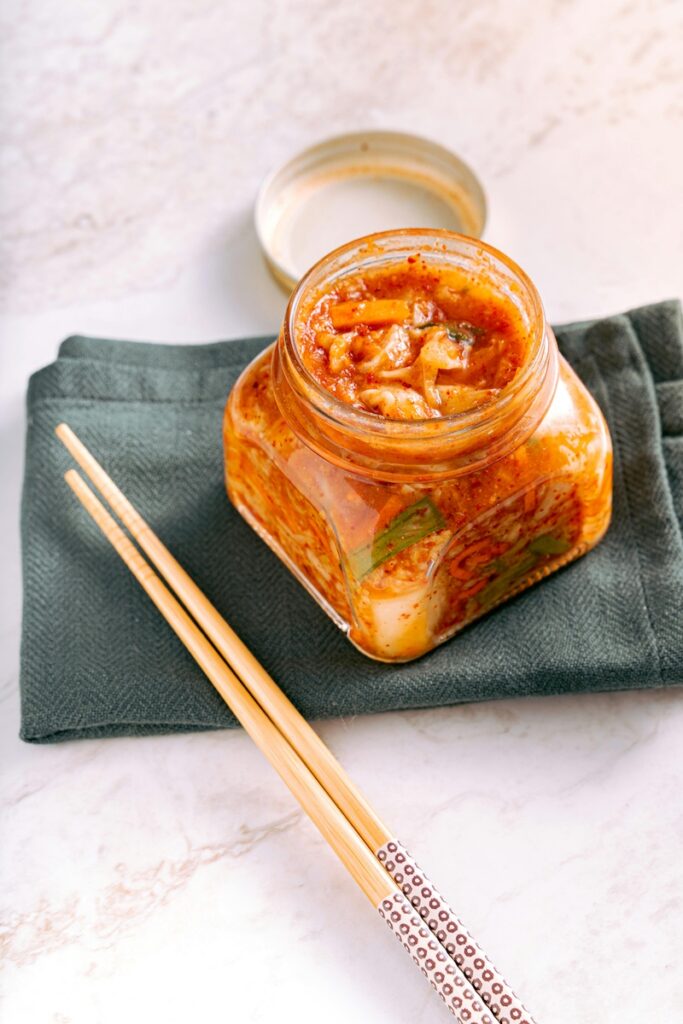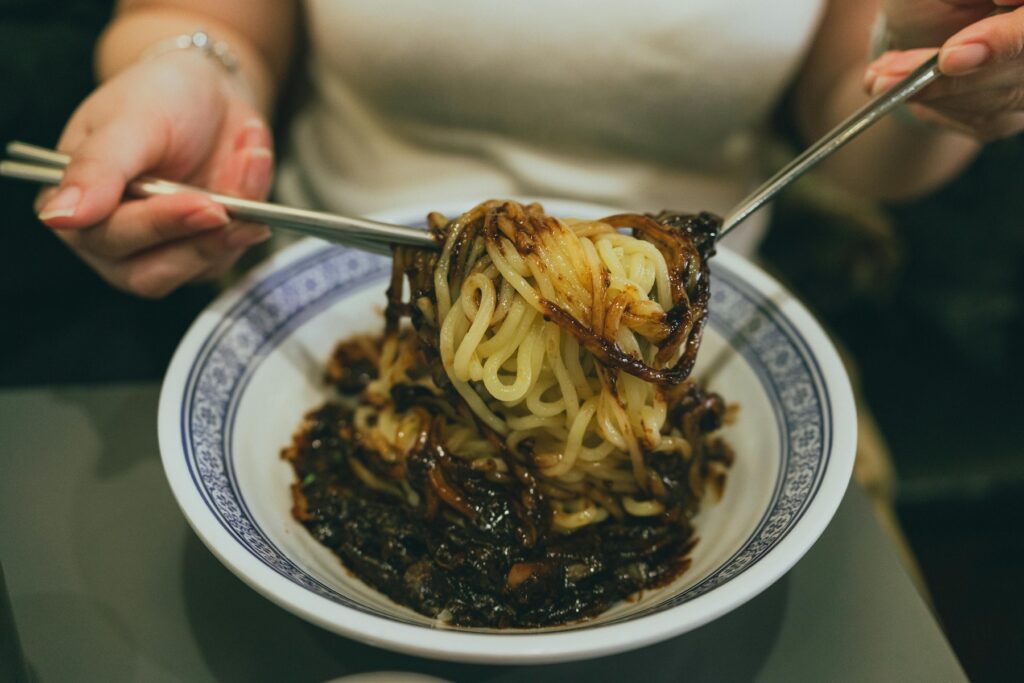Introduction: What Is Namul?
When foreigners first experience a traditional Korean meal, they are often surprised by the variety of small side dishes, known as banchan (반찬). Among them, namul (나물) stands out as one of the most essential, healthy, and culturally meaningful categories.
Namul refers to seasoned vegetable dishes, often made with wild greens, sprouts, or edible plants that are blanched, stir-fried, or marinated. They are simple yet versatile, served both in everyday home meals and during national holidays like Chuseok (추석) or Seollal (설날).
Two of the most famous types are gosari namul (고사리 나물, bracken fern stems) and goguma-sun namul (고구마순 나물, sweet potato stems). Both are deeply rooted in Korean food culture, providing not only unique flavors but also valuable nutrition.
For foreigners, trying namul is more than just eating vegetables. It’s about experiencing a side of Korean cuisine that represents health, history, and tradition.
1. The Cultural Meaning of Namul in Korea
Everyday Food and Holiday Food
- Koreans eat namul daily as part of a balanced diet.
- At the same time, namul plays a symbolic role in holidays:
- On Chuseok (Korean Thanksgiving), families prepare a variety of namul dishes as part of the ritual table (charye).
- On Seollal (Lunar New Year), namul accompanies rice cakes, soups, and other traditional dishes.
From Humble to Refined
- Namul began as a humble dish, often made from wild plants collected in mountains and fields.
- Today, namul is served even in luxury restaurants as part of a Korean fine dining experience.
- This duality makes namul both a “food of the people” and a “culinary art.”
2. Gosari Namul (고사리 나물) – Bracken Fern Stems
What It Is
Gosari is the young stem of bracken ferns, collected in spring, dried, and then soaked and cooked.
Flavor Profile
- Chewy texture, earthy and nutty flavor.
- Often stir-fried with garlic, soy sauce, and sesame oil.
Nutrition Benefits
- High in dietary fiber → aids digestion.
- Contains iron and potassium.
- Low calorie, making it diet-friendly.
Symbolic Value
- Essential in bibimbap (비빔밥).
- Considered a food that connects people to nature and tradition.
3. Goguma-Sun Namul (고구마순 나물) – Sweet Potato Stems
What It Is
Sweet potato stems, known as goguma-sun, are peeled and stir-fried to create a tender yet slightly crunchy namul dish.
Flavor Profile
- Slightly bitter but savory when cooked.
- Complements rice, kimchi, and grilled meats.
Nutrition Benefits
- Rich in fiber → helps blood sugar control.
- Contains vitamin A and antioxidants.
- Especially useful for people with diabetes (당뇨병) as part of a balanced diet.

4. Namul as a Superfood for Vegetarians and Vegans
For foreigners who are vegetarian or vegan, namul is a lifesaver in Korea.
- Most namul dishes are plant-based.
- Seasonings include soy sauce, sesame oil, garlic, and sesame seeds.
- Easy to find in restaurants, traditional markets, and even convenience stores.
👉 Keyword Tip for SEO: “Korean vegetarian food” often overlaps with searches for namul and bibimbap.
5. Namul in Bibimbap: A Global Icon
Perhaps the most famous way foreigners encounter namul is in bibimbap.
- A bowl of rice topped with assorted namul, meat, egg, and gochujang (red chili paste).
- Gosari namul is always included, giving bibimbap its earthy depth.
- Bibimbap has become a global dish, introducing namul to millions outside Korea.
👉 For travelers, ordering bibimbap is the easiest way to taste several kinds of namul at once.
6. Namul as Everyday Health Food
Korean households serve namul daily not just for taste but for health.
- Namul dishes are low in fat and high in fiber.
- They balance heavier dishes like meat and fried foods.
- They reflect Korea’s traditional philosophy of food as medicine (yakshik dongwon, 약식동원).
For people with chronic conditions like diabetes, hypertension, or obesity, namul provides a natural and safe dietary option.
7. The Seasonal Connection
Namul is closely tied to the seasons:
- Spring: Gosari, wild greens.
- Summer: Sweet potato stems, bean sprouts.
- Fall: Radish leaves, spinach.
- Winter: Dried vegetables rehydrated for cooking.
This seasonal variety makes namul a living representation of Korea’s natural rhythm.
8. Namul as a Culinary Experience for Foreigners
Foreigners visiting Korea often describe namul as:
- “A refreshing change from heavy Western food.”
- “Surprisingly flavorful for something so simple.”
- “An authentic way to understand Korean dining culture.”
Trying namul allows travelers to experience:
- The balance of Korean meals.
- The philosophy of harmony between rice, vegetables, and protein.
- The hospitality of being served multiple small dishes.
9. How Foreigners Can Try Namul in Korea
- Traditional Restaurants: Most serve 2–3 namul side dishes automatically.
- Bibimbap Restaurants: The easiest way to try several namul at once.
- Markets: Fresh namul sold in pre-seasoned packages.
- Home-cooked Meals: If you stay with a Korean family, namul will almost certainly appear.
10. From Rural Fields to Modern Tables
Namul shows the journey of Korean cuisine:
- Once, families gathered plants from mountains and fields.
- Now, namul is industrially produced and exported.
- Yet, it retains its original meaning: connecting people to nature and health.
Conclusion: Why Namul Matters
For foreigners, namul is not just “a side dish.” It is:
- A nutritious superfood perfect for vegetarians.
- A cultural symbol tied to holidays and family meals.
- A culinary bridge to dishes like bibimbap.
- A reflection of Korean values of balance, nature, and health.
Eating namul means tasting both the land of Korea and the philosophy of its people.
So if you are visiting Korea, don’t just try Korean BBQ or street food. Ask for gosari namul, goguma-sun namul, or any of the dozens of seasonal varieties. Your body will thank you, and you will experience a side of Korea many tourists overlook.

